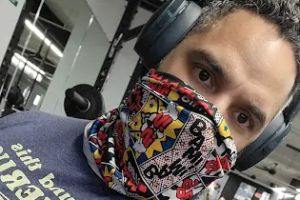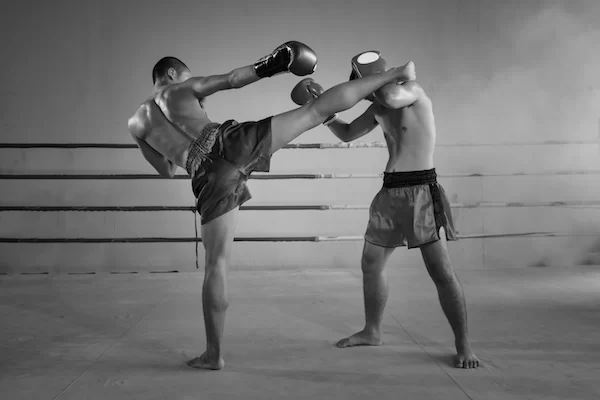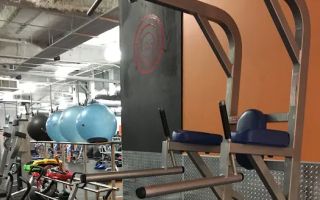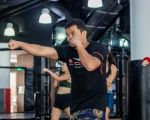Muay Thai Training Program for Beginners: Essential Tips and Techniques
- Why Choose Muay Thai for Your Fitness Journey?
- Essential Muay Thai Techniques Every Beginner Should Know
- Building a Beginner Muay Thai Training Routine
- Muay Thai Conditioning: Key Exercises for Beginners
- Real-Life Stories: Beginners Who Succeeded with Muay Thai
1. Why Choose Muay Thai for Your Fitness Journey?
Muay Thai, known as the "Art of Eight Limbs," is one of the most effective striking arts, utilizing punches, kicks, elbows, and knees. It’s a full-body workout that challenges both your strength and stamina, making it perfect for beginners looking to get into combat sports or enhance their fitness routine. The practical and dynamic nature of Muay Thai makes it a great choice for anyone interested in self-defense, weight loss, or competitive sports.
Additionally, Muay Thai is accessible to people of all fitness levels. Whether you're just starting out or are a seasoned athlete, there’s always room to improve. Plus, the benefits of Muay Thai training go beyond physical fitness – it helps develop mental toughness, discipline, and focus, making it an all-around great choice for beginners.

Independent Training Spot
54 W 39th St 3rd floor, New York, NY 10018, USA
2. Essential Muay Thai Techniques Every Beginner Should Know
Before diving into advanced moves, it's important to first understand the fundamental techniques of Muay Thai. Here are the basic moves that every beginner should master:
- Jab and Cross: The jab and cross are foundational strikes in Muay Thai. These punches are used to control distance, set up combinations, and wear down your opponent. Practice your footwork while throwing these punches to maintain balance and mobility.
- Elbows and Knees: Muay Thai is known for its devastating elbow and knee strikes. These are particularly useful in close-range combat and can be used to break through an opponent's guard. Beginners should focus on proper technique and angle when delivering elbows and knees to ensure maximum impact.
- Roundhouse Kick: The roundhouse kick is a signature move in Muay Thai. It involves rotating the hips and landing the kick with the shin. As a beginner, focus on proper form and flexibility to avoid injury and increase the power of your kicks.
- Clinch: The clinch is a vital aspect of Muay Thai, used to control the opponent's posture, set up knee strikes, and tire them out. Beginners should practice staying tight and maintaining control of the opponent’s head to effectively land knee strikes from the clinch.
3. Building a Beginner Muay Thai Training Routine
When starting a Muay Thai training program, it's essential to build a routine that incorporates both technique and conditioning. Here’s an example of a beginner’s Muay Thai training routine:
- Warm-up: Start with a light jog or jump rope for 5-10 minutes to get your heart rate up and prepare your body for intense activity.
- Shadowboxing: Spend 3-5 rounds practicing your punches, kicks, elbows, and knees. Focus on form and movement while imagining an opponent in front of you.
- Pad Work or Bag Work: Work with a partner or on a heavy bag to practice your strikes with power and accuracy. Try different combinations and integrate elbows and knees into your drills.
- Conditioning: Finish with Muay Thai-specific conditioning exercises, such as bodyweight squats, burpees, push-ups, and core exercises. These will help build the strength and stamina necessary for effective Muay Thai performance.
- Cooldown: End your session with some stretching to improve flexibility and reduce muscle soreness.
As you progress, increase the intensity and duration of your workouts. It’s important to remain consistent and patient, as Muay Thai requires time to master its complex techniques.

The Training Room ATL.
742 Ponce De Leon Pl NE, Atlanta, GA 30306, USA
4. Muay Thai Conditioning: Key Exercises for Beginners
Conditioning is crucial for success in Muay Thai. A well-conditioned body will allow you to throw strikes with more power, move quicker, and withstand the intensity of a fight. Here are some key conditioning exercises for beginners:
- Jump Rope: Jumping rope is excellent for building footwork, agility, and endurance, all of which are important in Muay Thai. Start with short intervals and gradually increase your time as your conditioning improves.
- Burpees: Burpees are a full-body exercise that boosts cardiovascular endurance and strengthens the core. This exercise mimics the explosive movements required in Muay Thai and helps develop the strength needed for powerful strikes.
- Core Workouts: A strong core is vital for generating power in Muay Thai strikes. Focus on exercises such as planks, leg raises, and Russian twists to develop core stability and power.
5. Real-Life Stories: Beginners Who Succeeded with Muay Thai
Take the case of Sarah, a 25-year-old beginner who started Muay Thai with no prior experience in combat sports. After committing to a consistent training program for just six months, Sarah noticed significant improvements in her technique and fitness level. Not only did she lose weight and build muscle, but she also gained confidence and mental strength. Sarah went on to compete in her first amateur Muay Thai match and was proud to see the results of her hard work.
6. Where to Find More Muay Thai Training Resources
If you're ready to dive deeper into Muay Thai, consider exploring more training programs and resources. For expert advice, training tips, and Muay Thai courses, check out Humble Challenger. They offer a variety of resources tailored to beginners that can help you refine your skills, improve your conditioning, and take your Muay Thai journey to the next level.

































